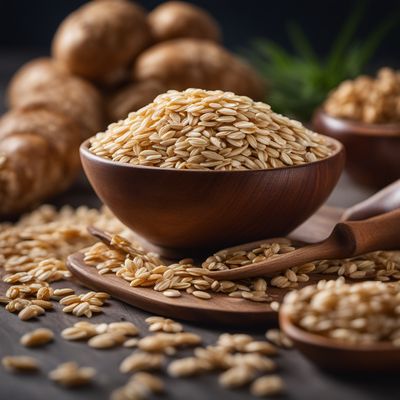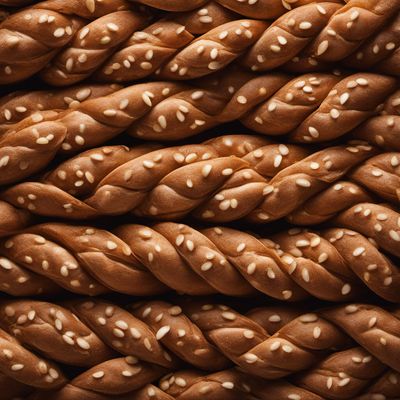
Ingredient
Wheat rolled grains
Wholesome Delights: Exploring the Nutritional Power of Wheat Rolled Grains
Wheat rolled grains are made by flattening whole wheat kernels, resulting in a chewy and textured ingredient. They have a nutty flavor and a slightly sweet taste, with a dense and substantial texture. These grains are light brown in color and have a rough, uneven surface.
Origins and history
Wheat has been cultivated for thousands of years and is believed to have originated in the Fertile Crescent of the Middle East. It has played a significant role in the development of human civilization, serving as a staple food in many cultures. Rolled grains made from wheat have been consumed for centuries, providing sustenance and nourishment to people around the world.
Nutritional information
Wheat rolled grains are a nutritional powerhouse, rich in fiber, protein, and essential minerals such as iron and magnesium. They are also a good source of complex carbohydrates and provide a moderate amount of calories, making them a satisfying and nourishing ingredient.
Allergens
Wheat rolled grains contain gluten, making them unsuitable for individuals with gluten intolerance or celiac disease.
How to select
When selecting wheat rolled grains, look for packages that are tightly sealed and free from any signs of moisture or insect damage. Opt for organic or locally sourced options whenever possible to ensure the highest quality and freshness.
Storage recommendations
To maintain the freshness and quality of wheat rolled grains, store them in an airtight container in a cool, dry place. Avoid exposure to sunlight or excessive heat, as it can cause the grains to spoil or lose their nutritional value.
How to produce
Wheat rolled grains can be produced at home by purchasing whole wheat kernels and using a grain roller or a rolling pin to flatten them. However, this process requires specialized equipment and may be more suitable for commercial production.
Preparation tips
Wheat rolled grains can be enjoyed in various ways. They can be cooked as a hot cereal by simmering them in water or milk until tender. They can also be added to baked goods such as bread, muffins, or granola bars for added texture and nutrition. For a quick and nutritious snack, mix them with nuts, dried fruits, and honey to create homemade energy bars.
Substitutions
If wheat rolled grains are not available, rolled oats can be used as a suitable substitute in most recipes.
Culinary uses
Wheat rolled grains are commonly used in breakfast cereals, granola, muesli, and porridge. They can also be incorporated into baked goods such as cookies, bread, and muffins for added texture and nutritional value.
Availability
Wheat rolled grains are commonly available in regions where wheat is cultivated, such as North America, Europe, and parts of Asia.
More ingredients from this category

Barley rolled grains
The Versatile Grain: Barley Rolled Grains

Rice rolled grains
The Versatile Delight: Unveiling the Magic of Rice Rolled Grains

Rye rolled grains
"The Wholesome Goodness of Rye: Unveiling the Versatility of Rolled Rye Grains"

Millet rolled grains
The Versatile Millet: Unleashing the Potential of Rolled Grains

Mixed cereal rolled grains
Wholesome Breakfast Blend

Oat rolled grains
Wholesome Oat Powerhouse

Spelt rolled grains
The Nutty Delight: Spelt Rolled Grains